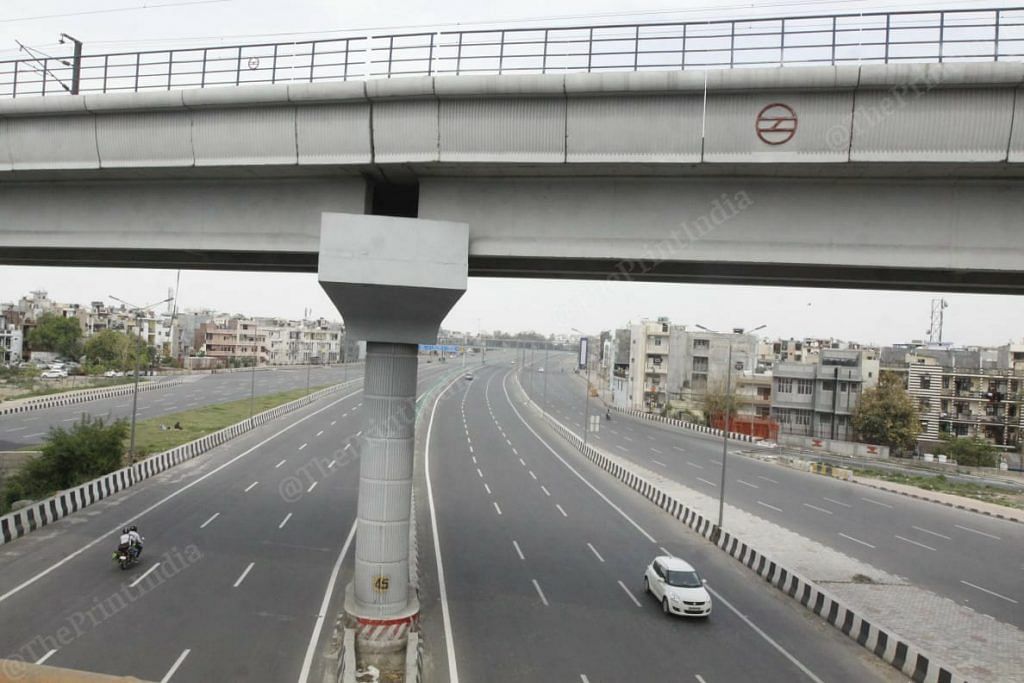New Delhi: India, in its fight against the coronavirus, has opted to enforce the harshest but among the most effective forms of nationwide lockdown.
In one country after the other, lockdowns have emerged as the key response against the coronavirus pandemic. There are, however, significant differences between lockdowns across the countries, and these variations have an impact on a nation’s ability to contain the spread of Covid-19 and reduce fatalities.
These lockdowns can be differentiated based on three key characteristics: time of enforcement, scale and scope, and for how long the lockdown remains in place.
China, the epicenter of the coronavirus, implemented the harshest form of lockdown in Wuhan after nearly 30 deaths had occurred. In about two months, China has managed to bring down the number of daily new cases to single digits.
In contrast, Italy — the new epicenter — implemented a gradual and less stringent nationwide lockdown that began only after 800 deaths. As a consequence, Italy is nowhere close to China when it comes to bringing the outbreak under control.
Similar to China, India also implemented a full-scale lockdown, but at a much earlier stage of the outbreak — immediately after 10 deaths.
Also read: Chinese factories are beginning to buzz again while rest of the world comes to a halt
Time of enforcement
As mentioned above, there are three characteristics that show the difference between lockdowns — time of enforcement, scale and scope, and the duration.
Time of enforcement is crucial because there is increasing evidence that the sooner a country imposes the lockdown, the lesser the number of deaths it is likely to witness.
Data compiled by the Financial Times shows that China implemented its lockdown after 30 deaths, Italy after 800 deaths, UK after 335 deaths, Spain after 200 deaths, and France after 175 deaths. The analysis shows “death tolls growing more quickly in Italy and Spain than they did in China at the same stage of the outbreak”.
Experts contend that developing countries such as India, which have limited healthcare capacities, should enforce a lockdown as early as possible. This would help minimise the loss of lives and not overburden healthcare systems.
Also read: Remdesivir trials in Israel and Italy’s drop in cases — 5 global developments on Covid-19
Scope and scale of lockdown
Lockdowns across countries have also varied at the level of stringency and the movement allowed within the region experiencing a lockdown. The key feature here is that some countries such as Spain and Italy gradually curtailed public life, while others such as India and China enforced a full-scale lockdown the moment they decided to enforce it.
For instance, after the virus had already spread, the province of Hubei and its capital Wuhan went into a complete lockdown on 23 January. There was complete road and transportation closure, restricting all movement in the city, including that of private cars. All commercial activity was shut down. Most residents of Wuhan live in residential compounds and no one was allowed to visit them. Most of these compounds were being guarded by security guards who ensured no one left their homes.
People were allowed to leave only for buying grocery and medicines, which was also highly regulated. Only one member of the family could leave for grocery every other day, and was forced to wear a mask. And most residents were discouraged from leaving their homes and asked to get grocery delivered.
The scope and scale of India’s lockdown is quite similar to that of China’s.
In stark comparison, both Italy and Spain only gradually curtailed public life. Restrictions on what residents were allowed to do became stringent over time in both the countries.
In Italy, the government first ordered a lockdown in only the north and then extended it to the south. Unlike China, the Italian government didn’t order a complete shutdown of transportation and commercial activity. Local travel was banned, except for “urgent, verifiable work situations and emergencies or health reasons”. Thus, although in reduced numbers, people continued to go to work for long periods.
According to scholars of epidemiology, the fact that Italy didn’t enforce a stringent lockdown and chose to increase restrictions gradually, led to large-scale community transmission.
Also read: Modi’s poorly planned lockdown won’t save us from coronavirus, but will kill economy
Duration of lockdowns
Another defining feature of lockdowns has been the duration for which they remain imposed. On Tuesday, US President Donald Trump sparked a controversy after he suggested that he may loosen the lockdown in America to restart the economy. This statement caused a lot of backlash, even from some of his core supporters.
“Try running an economy with major hospitals overflowing, doctors and nurses forced to stop treating some because they can’t help all, and every moment of gut-wrenching medical chaos being played out in our living rooms, on TV, on social media,” tweeted Republican party lawmaker, Lindsey Graham, who is considered a staunch Trump supporter. “There is no functioning economy unless we control the virus.”
In China, the lockdown has remained in place for over two months now, and the government has only now begun to lift some of the restrictions on public life. Though some restrictions are being lifted in the Hubei province, its capital city Wuhan — the original epicentre — will continue to remain in lockdown until 8 April. At this stage, China is recording zero local infections.
Experts advise countries such as India and other western countries dealing with an even harsher form of the epidemic to brace for long-lasting lockdowns.
Also read: Prince Charles tests positive for coronavirus, is in isolation at home in Scotland
